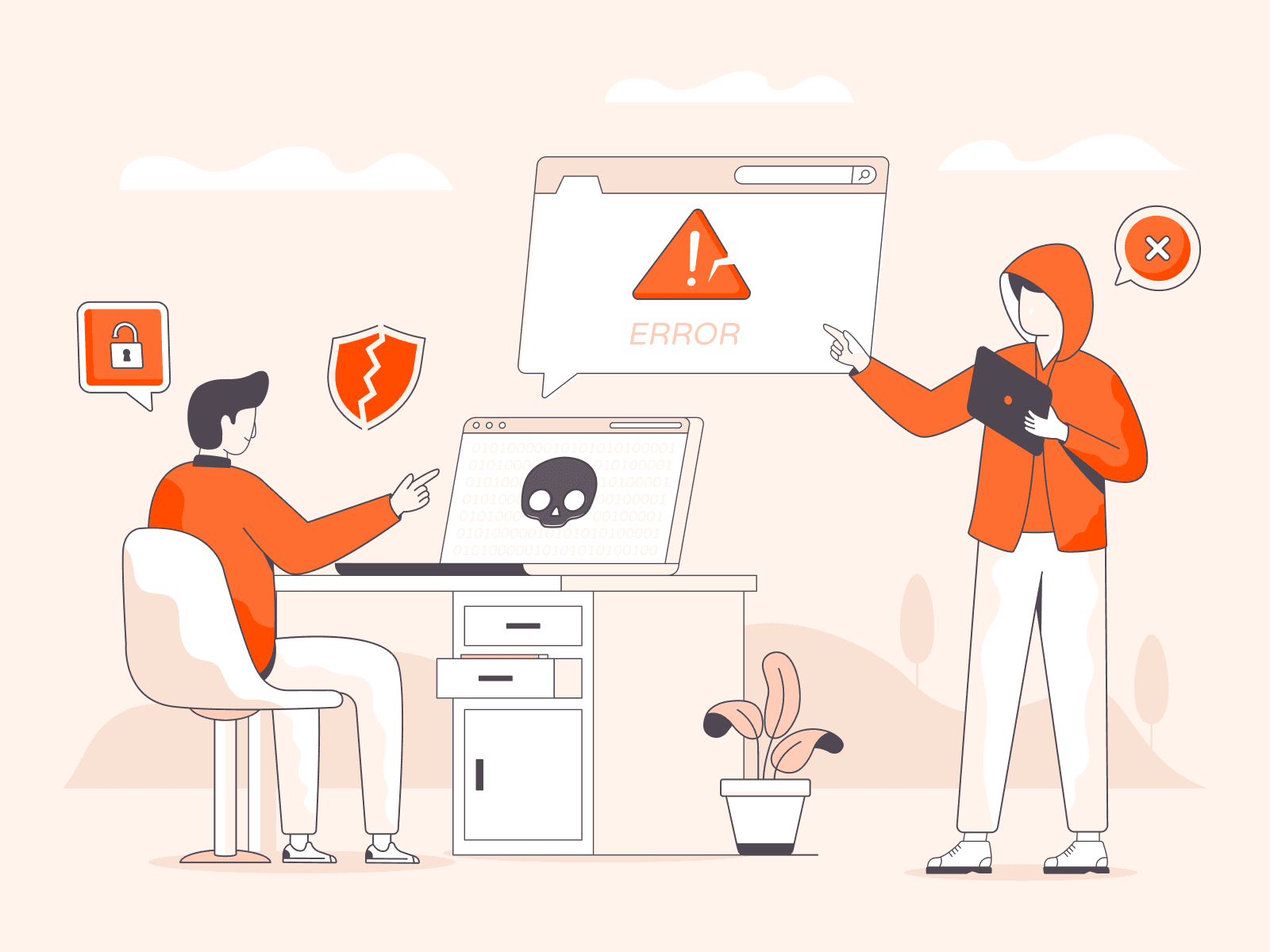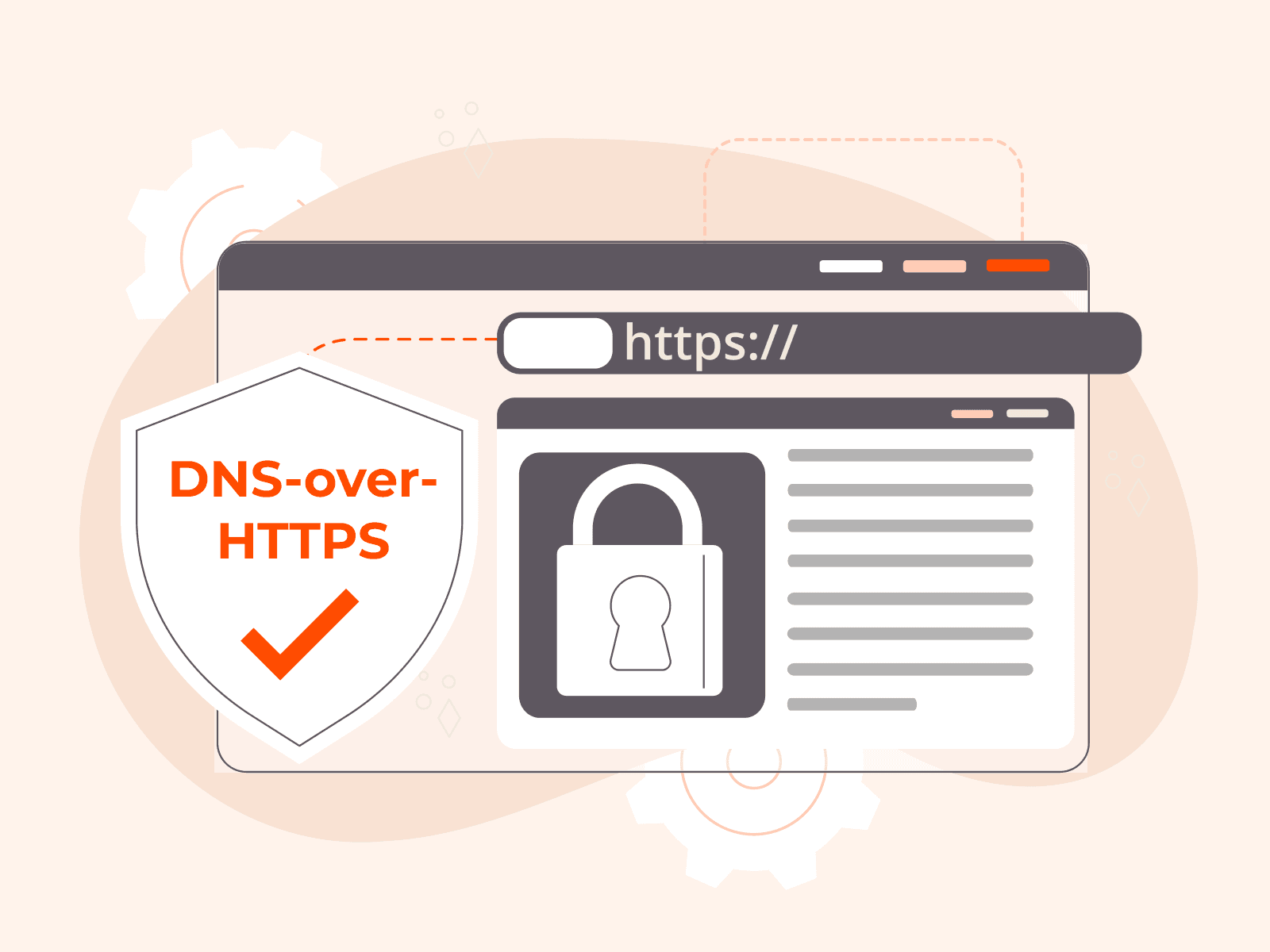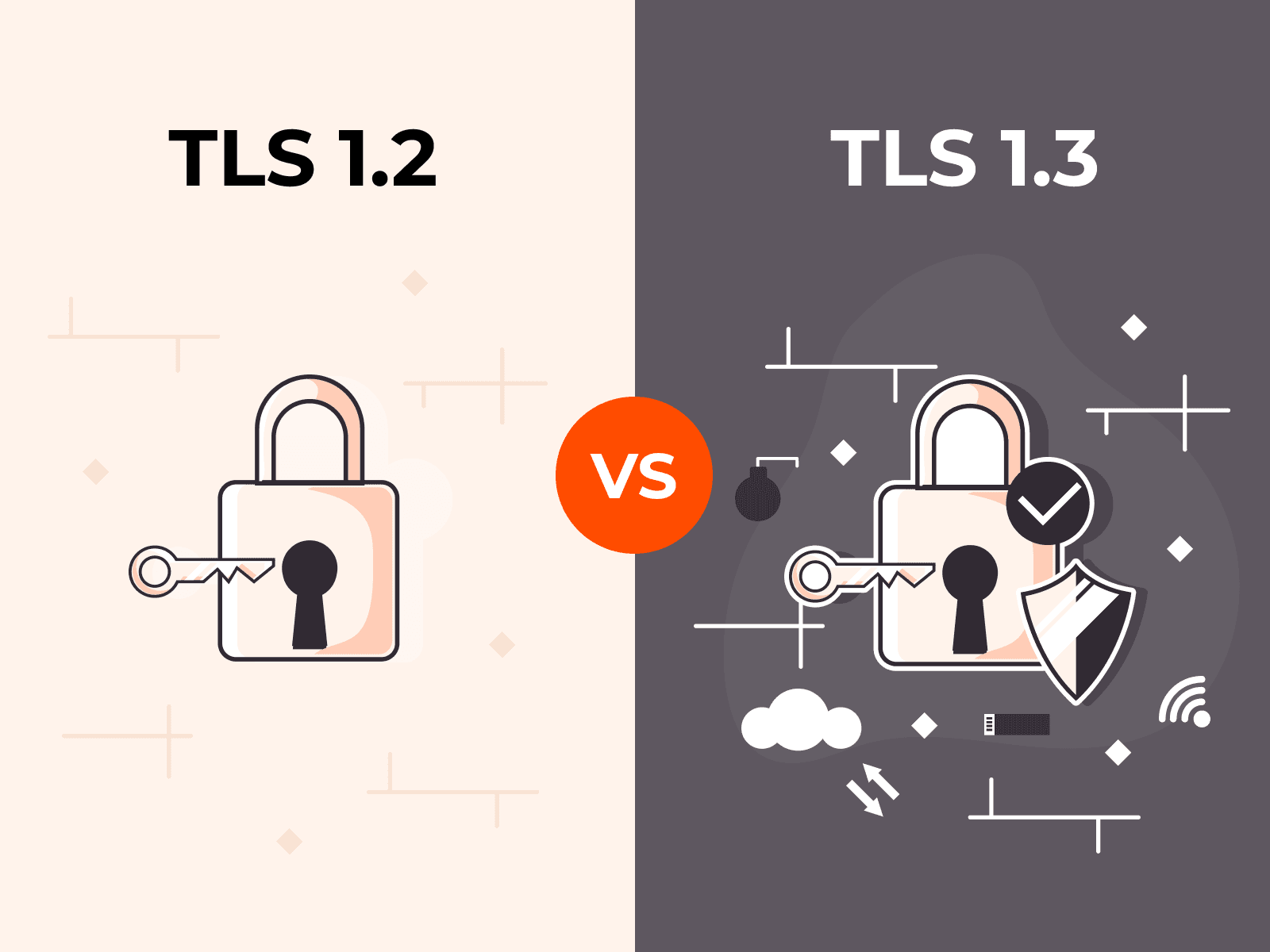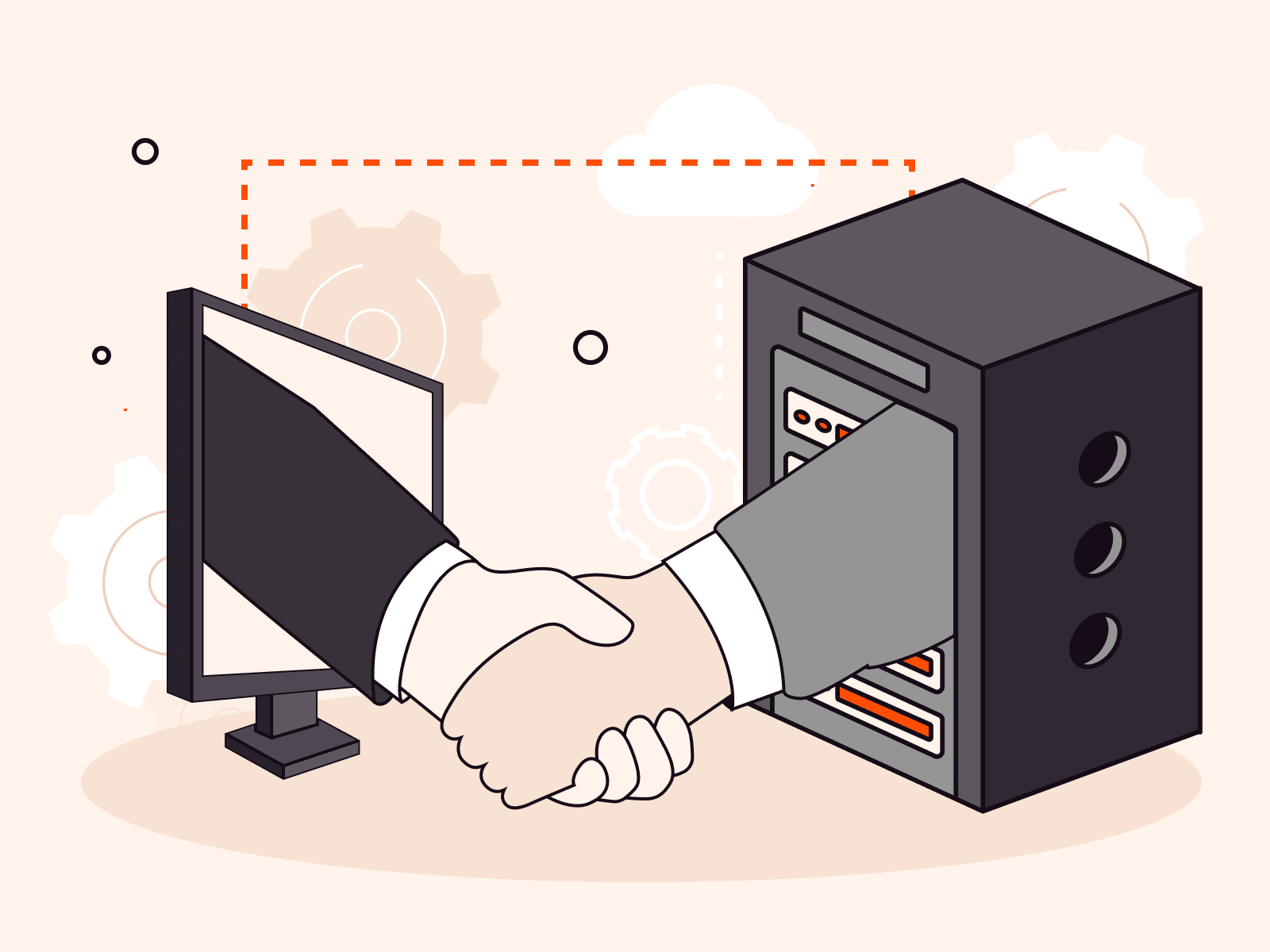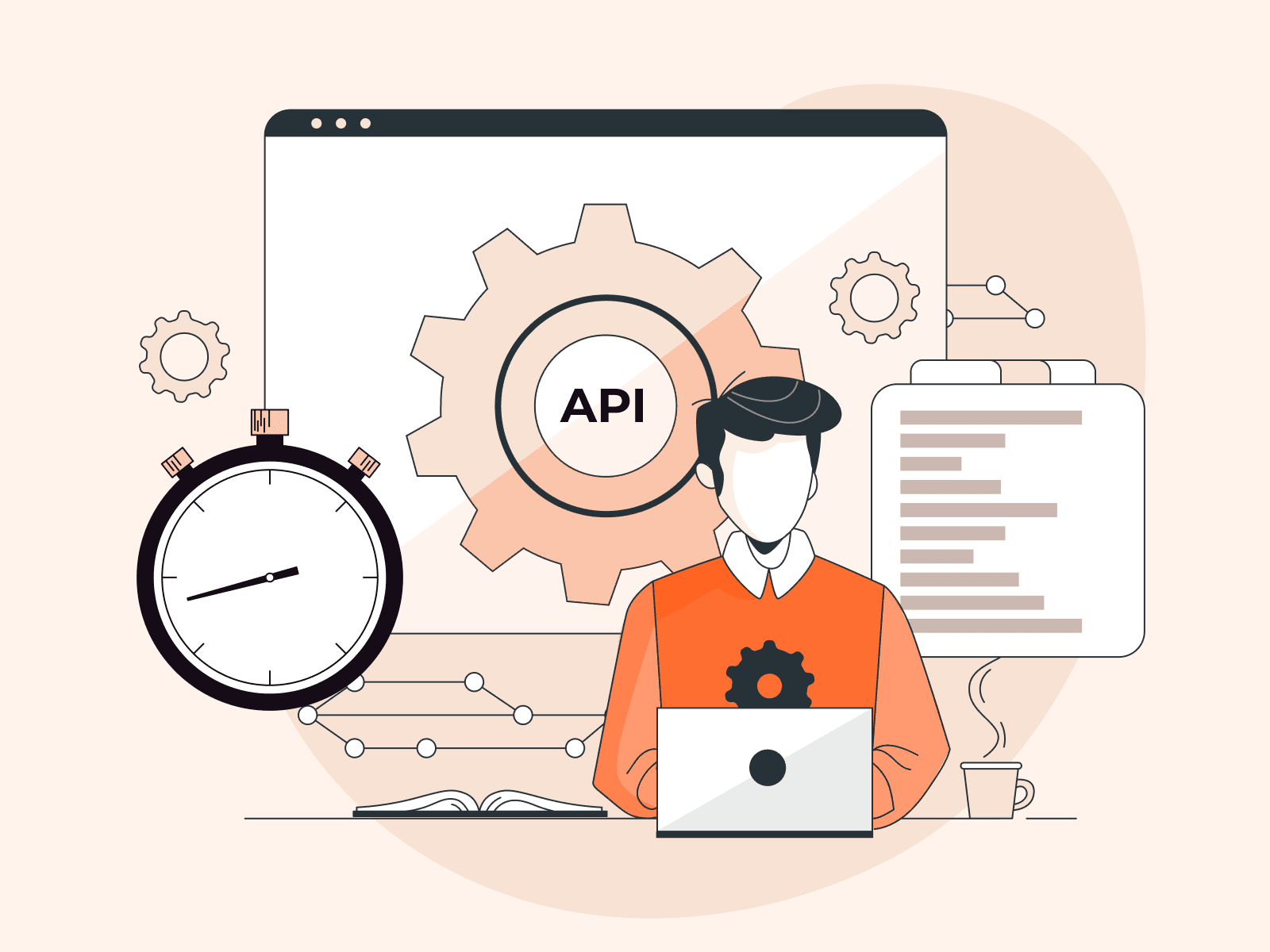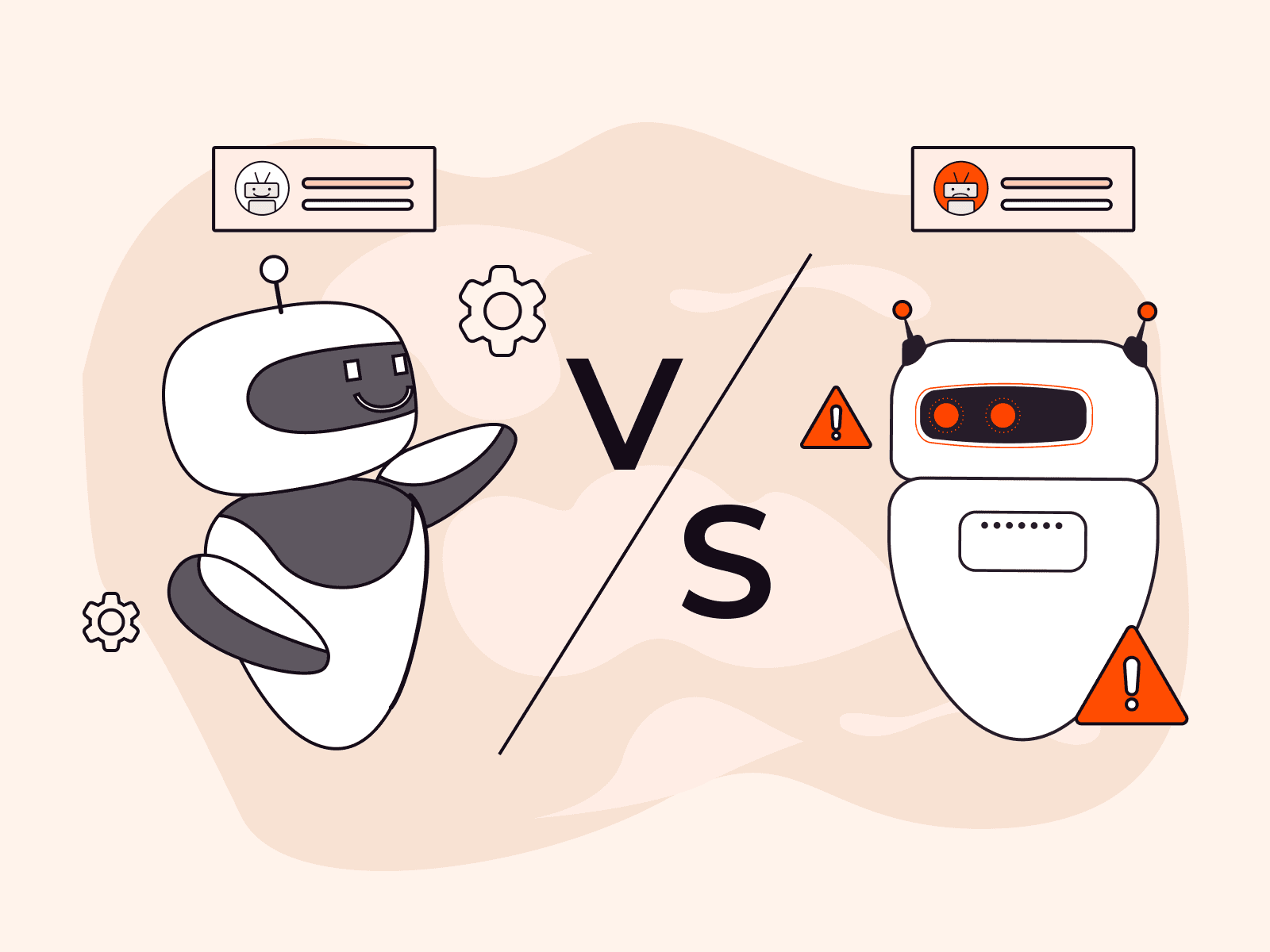A DNS flood is a type of Distributed Denial of Service (DDoS) attack that overwhelms DNS servers with massive volumes of queries, exhausting server resources and causing service disruption or complete outage for legitimate users. DNS-based attacks accounted for over 20% of all DDoS attacks in 2024, making them one of the most common threats to internet infrastructure.
The mechanics are straightforward. DNS flood attacks rely on botnets (networks of compromised devices) that generate enormous traffic volumes. Attackers often use IP address spoofing to mask the true source of queries. This makes it extremely difficult to distinguish legitimate requests from malicious ones.
The numbers are significant. The average size of DNS flood attacks has increased to over 50 Gbps in 2024, with some exceeding one terabit per second (Tbps).
DNS flood attacks come in several distinct forms, each targeting different aspects of DNS infrastructure. These variations include direct attacks on authoritative name servers, recursive resolver floods, and amplification attacks that exploit DNS protocol features. Understanding these attack types helps organizations build appropriate defenses.
The impact extends far beyond the targeted DNS server itself.
When a DNS server goes down, every website, application, and service that depends on it for name resolution becomes inaccessible to users. Over 60% of organizations experienced at least one DNS-based DDoS attack in the past 12 months, affecting business operations, revenue, and customer trust.
DNS floods pose a significant threat to internet availability because they target critical infrastructure that nearly all online services rely on. A successful attack can take down entire networks, affecting thousands of websites and services simultaneously.
What is a DNS flood attack?
A DNS flood attack is a type of Distributed Denial of Service (DDoS) attack that overwhelms DNS servers with a massive volume of DNS queries, exhausting server resources and causing service disruption or complete outage for legitimate users. Attackers typically deploy botnets (networks of compromised devices) to generate the high volume of traffic needed to flood the target DNS server, often using IP address spoofing to make it difficult to distinguish between legitimate and malicious traffic.
The attack exhausts the DNS server's CPU, memory, and bandwidth. This leads to slow response times or total unavailability of DNS resolution services. The impact extends beyond the targeted DNS server. Any services or websites that rely on it for name resolution can experience widespread internet service disruption.
How does a DNS flood attack work?
A DNS flood attack works by overwhelming a DNS server with an enormous volume of DNS queries, thereby exhausting its resources and preventing it from responding to legitimate requests. Attackers typically use botnets (networks of compromised computers and IoT devices) to generate millions of queries per second directed at the target DNS server. The flood consumes the server's CPU, memory, and bandwidth, causing slow response times or complete failure.
Many attackers spoof IP addresses to conceal their source and make the traffic appear legitimate, making filtering difficult. The attack doesn't just affect the DNS server itself. It disrupts any website or service that depends on that server for name resolution, potentially taking down entire online platforms.
DNS flood attacks come in several forms. Standard query floods bombard the server with valid DNS requests for real domains.
NXDOMAIN attacks (also called DNS Water Torture) target non-existent domains, forcing the server to waste resources searching for records that don't exist. DNS response floods send fake responses to queries the server never made, clogging its processing queue. Each type aims to exhaust different server resources, but all share the same goal: making DNS resolution unavailable.
The attack's impact extends beyond the immediate target. When DNS fails, users can't access websites even though the web servers themselves remain operational.
What are the different types of DNS flood attacks?
DNS flood attacks use different methods to overwhelm DNS servers with excessive traffic. Here are the main types.
- DNS query flood: Attackers send massive volumes of legitimate-looking DNS queries to the target server. This exhausts its processing capacity and bandwidth. These queries often target real domain names to make the traffic appear genuine, so the server becomes unable to respond to legitimate user requests as it struggles to process the flood.
- DNS response flood: Malicious actors spoof the target's IP address and send queries to many DNS servers. Those servers then flood the victim with responses. This amplifies the attack volume because DNS responses are typically larger than queries, meaning the target receives overwhelming traffic without having to query any servers directly.
- NXDOMAIN attack: Also called DNS water torture, this method floods servers with queries for non-existent domain names. The server must perform full recursive lookups for each fake domain. This consumes a significant amount of CPU and memory resources. It's particularly effective because it bypasses cache mechanisms.
- Random subdomain attack: Attackers generate queries for random subdomains of a legitimate domain. This forces the authoritative DNS server to respond to each unique request. The randomization prevents caching from reducing the load, which can take down specific domain DNS infrastructure rather than public resolvers.
- Phantom domain attack: The attacker sets up multiple "phantom" DNS servers that respond slowly or not at all. They then flood the target resolver with queries for domains hosted on these servers. The resolver waits for responses that never arrive, tying up resources and creating a backlog that prevents processing of legitimate queries.
- Domain lock-up attack: Similar to phantom domain attacks, this method exploits slow DNS responses by creating domains that respond just slowly enough to keep connections open. The target resolver maintains numerous open connections, waiting for responses, which can exhaust connection pools and memory resources.
What are the impacts of DNS flood attacks?
The impacts of DNS flood attacks refer to the consequences organizations and users experience when DNS servers are overwhelmed by malicious traffic. The effects of DNS flood attacks are listed below.
- Service unavailability: DNS flood attacks prevent legitimate users from accessing websites and online services by exhausting server resources. When DNS servers can't resolve domain names to IP addresses, all dependent services become unreachable.
- Revenue loss: Organizations experience direct financial damage when customers are unable to complete transactions during an attack. E-commerce platforms can lose thousands to millions in sales per hour of downtime, especially during peak business periods.
- Degraded performance: Even when services remain partially available, DNS resolution delays result in slow page loads and a poor user experience. Response times can increase from milliseconds to several seconds, frustrating users and damaging your brand reputation.
- Resource exhaustion: The attack consumes server CPU, memory, and bandwidth, preventing your infrastructure from handling legitimate queries. This exhaustion affects not just the targeted DNS server but also upstream network equipment and related systems.
- Widespread cascading failures: DNS flood attacks impact every service that depends on the targeted DNS infrastructure for name resolution. A single compromised DNS provider can simultaneously disrupt access to hundreds or thousands of websites and applications.
- Increased operational costs: Organizations must invest in mitigation services, additional bandwidth, and incident response efforts during and after attacks. These unplanned expenses include emergency staffing, forensic analysis, and infrastructure upgrades aimed at preventing future incidents.
- Detection challenges: IP address spoofing makes it difficult to distinguish malicious traffic from legitimate queries, complicating defense efforts. Security teams struggle to implement effective filtering without blocking real users.
How to detect a DNS flood attack
You detect a DNS flood attack by monitoring DNS traffic patterns, analyzing query volumes and types, and identifying anomalies that indicate malicious activity targeting your DNS infrastructure.
- First, establish baseline metrics for your normal DNS traffic patterns over at least 30 days. Track queries per second (QPS), response times, query types, and source IP distributions. This shows you what's typical for your environment.
- Next, deploy real-time monitoring tools that track DNS query rates and alert you when traffic exceeds your baseline by 200-300% or more. Sudden QPS spikes often signal the start of a flood attack, especially when server performance degrades simultaneously.
- Then, analyze the distribution of query types in your traffic. DNS flood attacks often show abnormal patterns. You'll see an unusually high percentage of A or AAAA record queries, or a surge in NXDOMAIN responses indicating queries for non-existent domains (Water Torture attacks).
- Check for signs of IP address spoofing by examining the geographic distribution and diversity of source IPs. Attacks typically involve requests from thousands of different IP addresses across unusual locations. These often exhibit randomized or sequential patterns that don't align with legitimate user behavior.
- Monitor your DNS server's resource consumption, including CPU usage, memory allocation, and network bandwidth. A flood attack pushes these metrics toward capacity limits (80-100% utilization) even when legitimate traffic hasn't increased proportionally.
- Look for repetitive query patterns or identical queries from multiple sources. Attackers often send the same DNS queries repeatedly or target specific domains. This creates recognizable signatures in your logs that differ from organic user requests.
- Finally, track response times and error rates for DNS resolution. When legitimate queries start timing out or your server returns SERVFAIL responses due to resource exhaustion, you're likely experiencing an active attack that requires immediate mitigation. Set up automated alerts that trigger when multiple indicators occur simultaneously. High QPS combined with elevated NXDOMAIN rates and CPU spikes means you need to catch attacks within the first few minutes.
How to prevent and mitigate DNS flood attacks
You prevent and mitigate DNS flood attacks by combining proactive defenses, such as rate limiting and traffic filtering, with reactive measures, including anycast routing and DDoS mitigation services.
- First, deploy rate limiting on your DNS servers to restrict the number of queries from a single IP address within a specific timeframe. Set thresholds based on your normal traffic patterns (typically 5-10 queries per second per IP for most environments) to block excessive requests while allowing legitimate traffic through.
- Next, configure response rate limiting (RRL) to control the number of identical responses your DNS server sends to the same client. This prevents attackers from exhausting your bandwidth with repetitive queries. It also reduces the effectiveness of amplification techniques.
- Then, set up anycast routing to distribute DNS queries across multiple geographically dispersed servers. When one location experiences a flood, traffic automatically routes to other servers. This prevents a single point of failure and absorbs attack traffic across your network.
- After that, enable DNS query filtering to identify and block suspicious patterns, such as NXDOMAIN attacks, which target non-existent domains. Monitor for sudden spikes in queries for domains that don't exist in your zone. These attacks are designed to exhaust server resources through cache misses.
- Deploy dedicated DDoS mitigation services that can absorb large-scale attacks before they reach your infrastructure. These services typically handle attacks exceeding 50 Gbps and can scrub malicious traffic while forwarding legitimate queries to your DNS servers.
- Implement DNSSEC to authenticate DNS responses and prevent cache poisoning attempts that often accompany flood attacks. DNSSEC doesn't stop floods directly, but it protects data integrity during attack mitigation efforts.
- Finally, maintain excess capacity in your DNS infrastructure by provisioning servers with 3-5 times your normal peak load. This buffer gives you time to activate mitigation measures before service degradation occurs. Monitor your DNS traffic continuously with automated alerts for unusual query volumes or patterns. Early detection can reduce the impact of an attack from hours to minutes.
What is the difference between DNS floods and other DDoS attacks?
A DNS flood attack is a specific type of DDoS attack that targets DNS infrastructure by overwhelming DNS servers with massive volumes of queries. Other DDoS attacks target different layers, such as application servers, network bandwidth, or transport protocols.
The key difference lies in the attack vector. DNS floods focus on exhausting DNS server resources (CPU, memory, bandwidth) through query or response floods. Other DDoS attacks might target web servers with HTTP requests, network infrastructure with volumetric attacks, or application logic with sophisticated exploits.
DNS floods present unique challenges. Attackers often spoof IP addresses and utilize botnets to generate legitimate-looking DNS queries, making it more challenging to distinguish malicious traffic from normal DNS resolution requests. Other DDoS attacks such as SYN floods, UDP floods, or HTTP floods, work at different network layers and require different detection and mitigation approaches.
Frequently asked questions
What's the difference between a DNS flood and a DNS amplification attack?
A DNS flood overwhelms DNS servers with massive query volumes, exhausting their resources. DNS amplification works differently. It exploits open DNS resolvers to multiply attack traffic and redirect it toward a target. DNS floods rely on sheer volume from botnets to take down servers. Amplification attacks turn legitimate DNS servers into unwitting participants that send larger responses to a spoofed victim address, magnifying the impact of each request.
How long does a typical DNS flood attack last?
DNS flood attacks typically last from a few minutes to several hours. Some sophisticated campaigns persist for days with intermittent bursts. Attack duration depends on three key factors: the attacker's resources, their objectives, and how quickly you deploy effective mitigation measures.
Can small businesses be targets of DNS flood attacks?
Yes, small businesses are targets of DNS flood attacks. Attackers often view them as easier targets with weaker defenses than those of large enterprises.
What is the cost of DNS flood protection services?
DNS flood protection costs range from a free basic mitigation to over $1,000 per month for enterprise solutions. Pricing depends on your traffic volume, the scale of attacks you need to handle, and the features you select (such as always-on protection versus on-demand activation).
How does DNS caching help against flood attacks?
DNS caching helps protect against flood attacks by storing query responses locally, which cuts the load on authoritative DNS servers. This means recursive DNS servers can answer repeated queries directly from cache without forwarding traffic to your overwhelmed target server. Cached responses continue serving legitimate requests even during an active attack.
Are cloud-based DNS services more resistant to floods?
Yes, cloud-based DNS services are significantly more resistant to floods. They distribute traffic across multiple global servers and can absorb attack volumes that would overwhelm a single infrastructure. They typically offer automatic scaling and traffic filtering that detects and blocks malicious queries in real time, often mitigating attacks within minutes.
What should I do during an active DNS flood attack?
Contact your DNS provider or managed security service right away to enable rate limiting and traffic filtering at the network edge. If you manage your own DNS infrastructure, here's what you need to do: activate DDoS mitigation tools, temporarily increase server capacity, and implement query rate limits per source IP. This approach blocks malicious traffic while allowing legitimate requests to pass through.
Related articles
Subscribe to our newsletter
Get the latest industry trends, exclusive insights, and Gcore updates delivered straight to your inbox.
